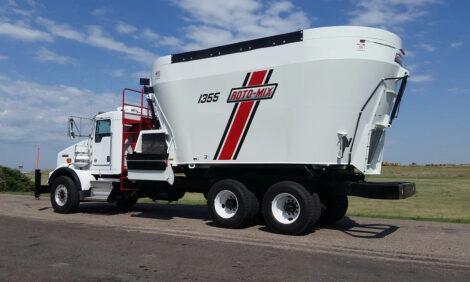



Managing Dairy Calves: Clean, Dry Conditions are Essential
While there is much to be said for housing calves in outdoor hutches, it is important to manage and feed them in individual pens even though this may mean more time and labour than if allowed to feed at a communal milk machine, veterinary surgeon, Neil Roberts, told visitors to a Dugdale Nutrition iFeed organised farms open day.Speaking at Copp Farm, Great Eccleston, Lancashire, Mr Roberts of Dalehead Veterinary Group, Settle said that in one case a farmer had housed calves in individual hutches but instead of feeding them separately had allowed them access to a communal milk machine. The result was an outbreak of scours and pneumonia which individual feeding in the hutches would have avoided.
Well managed housing in hutches means that the calves are unlikely to be exposed to pneumonia, however this also meant they were potentially vulnerable to the condition when mixed with other calves.
Hutches need to be well bedded and on free draining surfaces. Ventilation is important so hutches with vented openings in the back were recommended.
“The aim with all dairy calves is to achieve 0.8kg/day live-weight gain from birth through to weaning which roughly means doubling their body weight over this period. There is strong evidence that the greater the weight gains pre-weaning, the more robust the immune system is to fight off infection in later life.
“On average, for every additional 100 grams of average daily weight gain during the first two months of life, about 225kg of additional milk yield could be expected in the first lactation.
"Furthermore improving weight gains before weaning resulted in better survivability of heifers into the second lactation. These health benefits from good weight gains before weaning cannot be achieved by increasing weight gains after weaning,” he said.
Mr Roberts said that in a dry draught free environment the lower critical temperature for a young calf (the temperature below which it needed to burn additional energy to keep warm) is 9ºC, whereas in damp draughty conditions this temperature rises to 17ºC. For each ºC below the lower critical temperature, the calf uses an additional 2 per cent of energy just for maintenance and to keep warm.
If hutches are badly situated resulting in exposure to winds and damp bedding, the growth rates of the calves will be significantly reduced. For young calves in both hutches and buildings in winter months, he strongly recommended the use of calf jackets to keep them warm, he said.
Looking at calf buildings at Great Eccleston Hall, he stressed the need for clean, dry conditions and, most importantly, ventilation and air movement providing draught free fresh air at calf level.
Pneumonia is a constant threat to calves even in the best calf house environments. The virus is spread from calf to calf in droplets of moisture but could only survive for about a minute outside the animal in dry conditions but up to 10 minutes in humid conditions, said Mr Roberts.
Housing adult dairy cattle was also taken up by Dugdale Nutrition dairy consultant, Adam Collantine who said: “The average dairy cow produces 1.25kw of heat per day, so 100 head will produce a significant amount of heat. Dairy cows perform best at about 50 to 60 Centigrade. It is important that the ventilation should remove moisture, dust, gasses, micro-organisms and to minimise the spread of respiratory diseases.
“It is also vital that this should work evenly over all the cattle housing 24 hours a day throughout the year, with an air speed of 1m per second able to naturally ventilate a well designed shed.
Maintaining this can be tricky and on most sites it is suggested that gable ends remain closed, but everything depends on the individual situation. Where efficient natural ventilation is not available, mechanical intervention such as fans may be needed.
“Lighting is also important. Milkers need 16-18 hours’ light at about 160-200 lux and the remaining dark period at about 30 lux – similar to bright moonlight. Dry cows need the reverse. One farmer uses a timer so that the main lights come on about 30 minutes before milking, which seems to work well giving the cows a chance to wake up before going into the parlour.
“It makes sense to make maximum use of natural light and to keep lights and roof lights clean, also lighting needs to be even throughout the building.”
The open days were organised as part of Dugdale Nutrition’s Intelligent Feeding Forum programme.


